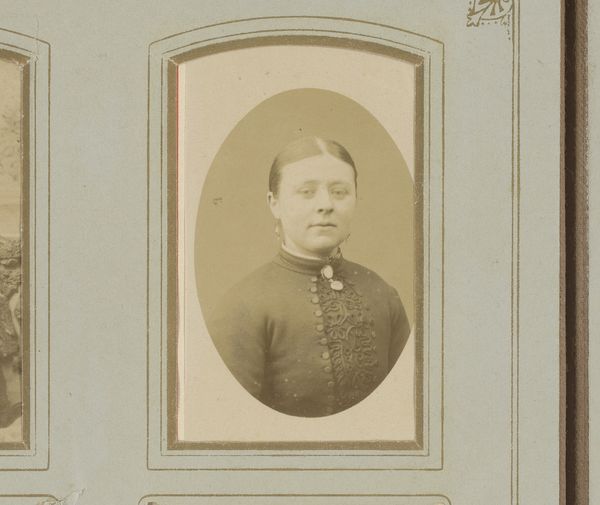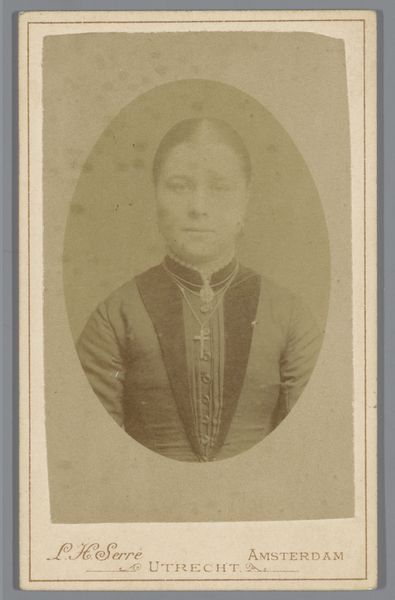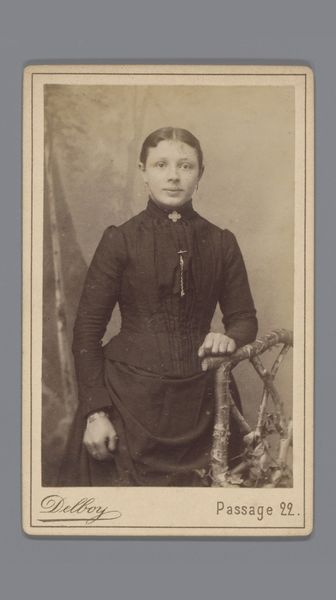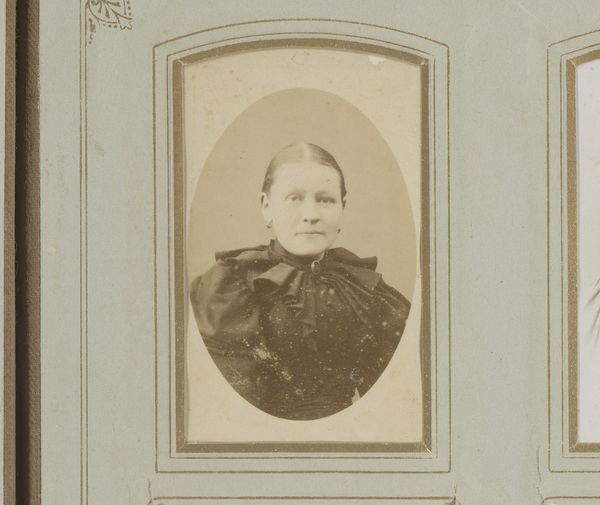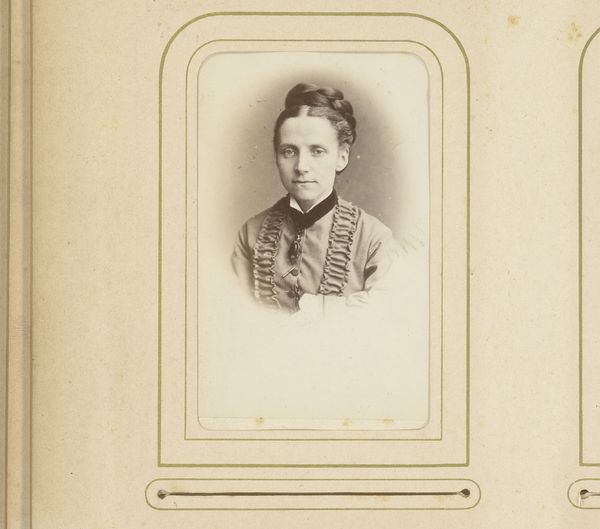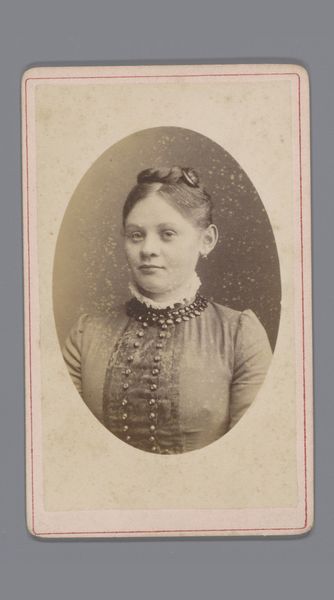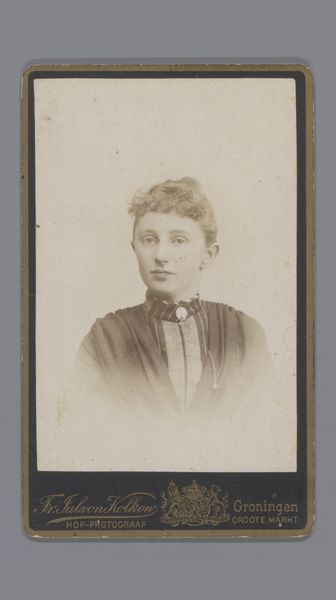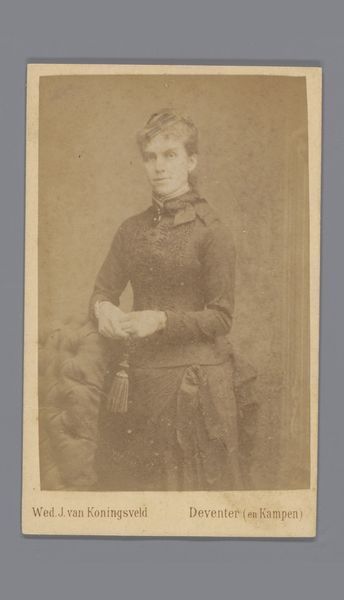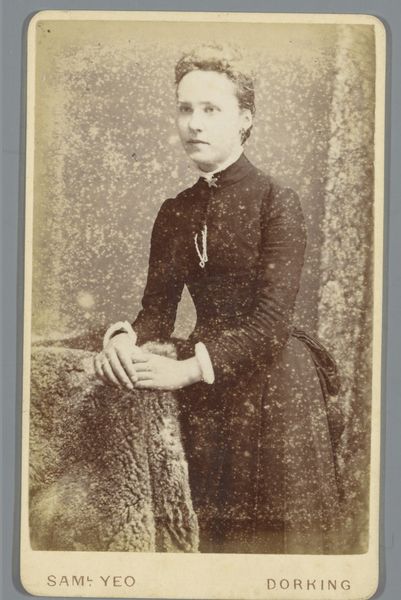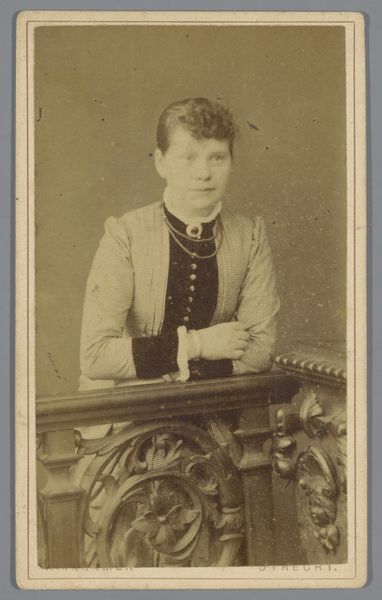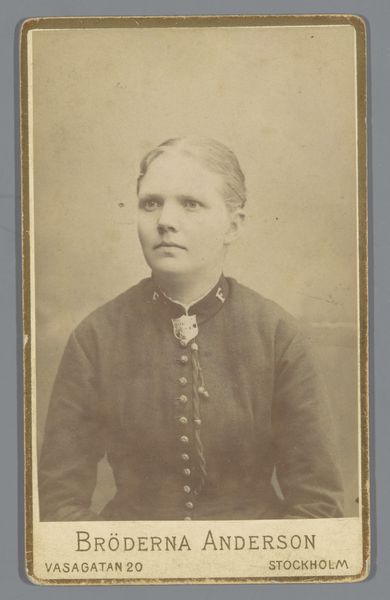
photography, albumen-print
#
portrait
#
photography
#
albumen-print
Dimensions: height 104 mm, width 64 mm
Copyright: Rijks Museum: Open Domain
Curator: I find the sepia tones and the formality in this portrait fascinating. Editor: There’s an austerity about it, definitely. And it’s small, isn’t it? Curator: Indeed. Here we have a mounted albumen print entitled, "Portret van Grietje Welt" which translates to Portrait of Grietje Welt by Friedrich Julius von Kolkow, produced sometime between 1884 and 1896. It's currently held in the collection here at the Rijksmuseum. It provides such tangible access to the social structures surrounding the turn of the century. Editor: I’m struck by the textures captured with such fidelity for a relatively early photograph: the patterned fabric of her dress, the velvet detailing, even the woven texture of what I presume is a small table. Albumen printing sounds quite intensive. Curator: It is. Egg whites were used to bind the photographic chemicals to the paper. It's remarkable to consider the amount of labour involved, especially the gathering, preparation and application of the albumen itself in what became quite a commercialised process. This level of detail made portraiture accessible to more social classes at the time, and also solidified the profession for practitioners. Editor: It suggests a growing middle class aspiring to emulate aristocratic portraiture traditions. I am curious as to Grietje's position within Dutch society during that period. One can’t help but wonder about her access to photography studios. Her modest, yet stylish clothing hints at particular levels of consumption patterns as well. Curator: That's an insightful interpretation, although it doesn’t quite give the whole picture. I am quite taken by the way Von Kolkow plays on social status; note the small table or stand. We now find them displayed in furniture shops from mass produced workshops, democratising and emulating elite tastes, albeit to various quality and aesthetic standards. Editor: Interesting point. Seeing it now, the almost ubiquitous spread of visual representation and its social functions fascinates me as photography has, ironically, became such a democratic medium with camera phones now. Curator: Yes. As for me, seeing the labor embedded in such items and processes keeps me wondering where that sits today.
Comments
No comments
Be the first to comment and join the conversation on the ultimate creative platform.

